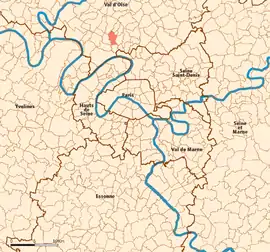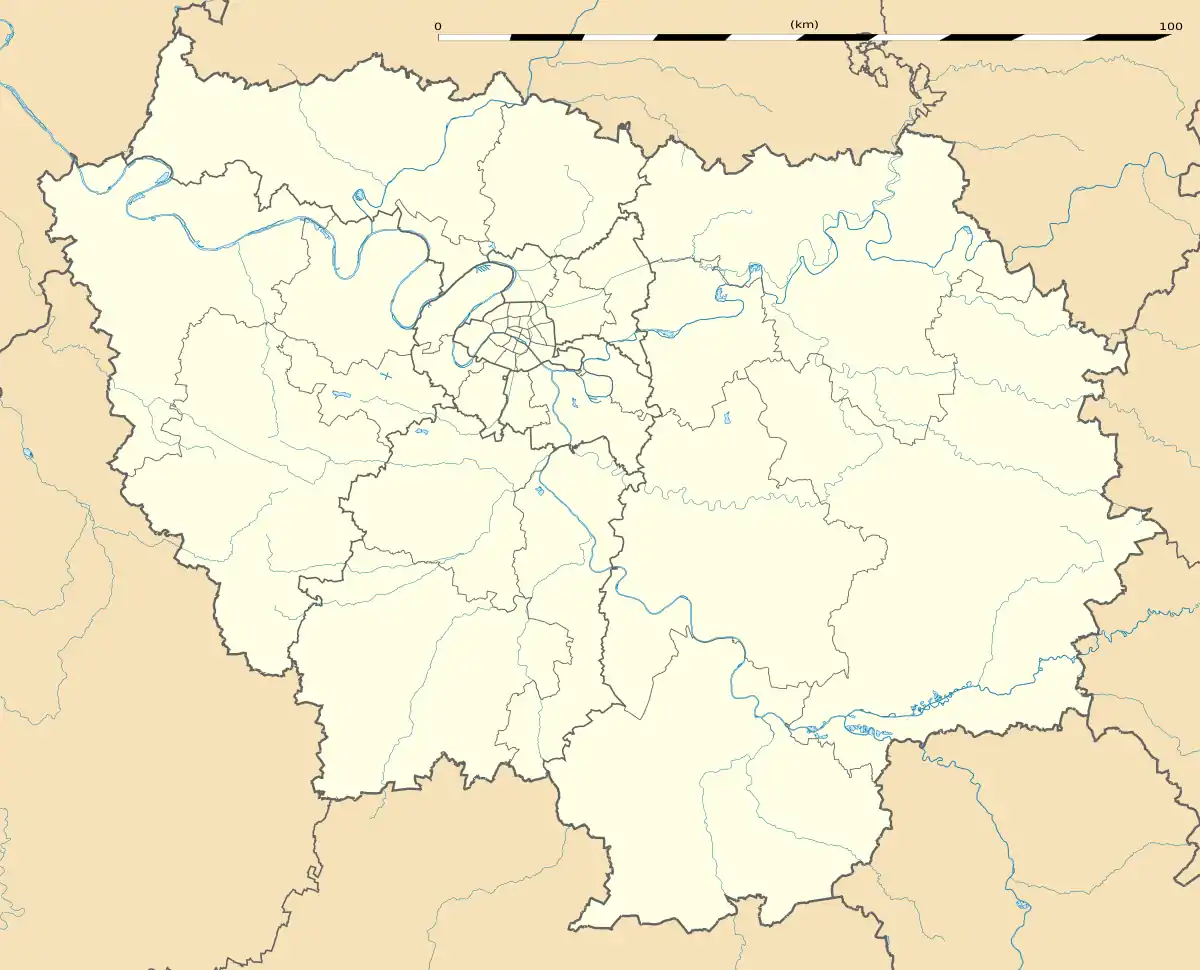Eaubonne
Eaubonne (IPA: [obɔn]) is a commune in the northern suburbs of Paris, France. It is located 16.1 km (10.0 mi) from the center of Paris.
Eaubonne | |
|---|---|
 The Avenue de l'Europe, in Eaubonne | |
.svg.png.webp) Coat of arms | |
 Location (in red) within Paris inner and outer suburbs | |
Location of Eaubonne 
| |
 Eaubonne Location (in red) within Paris inner and outer suburbs  Eaubonne Eaubonne (Île-de-France (region)) | |
| Coordinates: 48°59′32″N 2°16′50″E | |
| Country | France |
| Region | Île-de-France |
| Department | Val-d'Oise |
| Arrondissement | Argenteuil |
| Canton | Ermont |
| Intercommunality | Val Parisis |
| Government | |
| • Mayor (2020–2026) | Marie-José Beaulande[1] |
| Area 1 | 4.42 km2 (1.71 sq mi) |
| Population (2017-01-01)[2] | 25,097 |
| • Density | 5,700/km2 (15,000/sq mi) |
| Time zone | UTC+01:00 (CET) |
| • Summer (DST) | UTC+02:00 (CEST) |
| INSEE/Postal code | 95203 /95600 |
| Elevation | 41–83 m (135–272 ft) |
| 1 French Land Register data, which excludes lakes, ponds, glaciers > 1 km2 (0.386 sq mi or 247 acres) and river estuaries. | |
Population
| Year | Pop. | ±% |
|---|---|---|
| 2006 | 23,640 | — |
| 2007 | 23,541 | −0.4% |
| 2008 | 23,795 | +1.1% |
| 2009 | 23,878 | +0.3% |
| 2010 | 24,062 | +0.8% |
| 2011 | 24,300 | +1.0% |
| 2012 | 24,714 | +1.7% |
| 2013 | 24,606 | −0.4% |
| 2014 | 24,393 | −0.9% |
| 2015 | 24,609 | +0.9% |
| 2016 | 25,161 | +2.2% |
Twin towns
It is twinned with Matlock, Derbyshire, England; Budenheim, Germany and Vălenii de Munte, Romania.
Transport
Eaubonne is served by Ermont – Eaubonne station which is an interchange station on Paris RER line C, on the Transilien Paris – Nord suburban rail line, and on the Transilien Paris – Saint-Lazare suburban rail line. This station is located at the border between the commune of Eaubonne and the commune of Ermont, on the Ermont side of the border.
Eaubonne is also served by Champ de Courses d'Enghien station on the Transilien Paris – Nord suburban rail line. This station is located at the border between the commune of Eaubonne and the commune of Soisy-sous-Montmorency, on the Soisy-sous-Montmorency side of the border.
References
- "Répertoire national des élus: les maires". data.gouv.fr, Plateforme ouverte des données publiques françaises (in French). 2 December 2020. Retrieved 12 December 2020.
- "Populations légales 2017". INSEE. Retrieved 6 January 2020.
External links
| Wikimedia Commons has media related to Eaubonne. |
- Official website (in French)
- Base Mérimée: Search for heritage in the commune, Ministère français de la Culture. (in French)
- Land use (IAURIF) (in English)
- Association of Mayors of the Val d’Oise (in French)